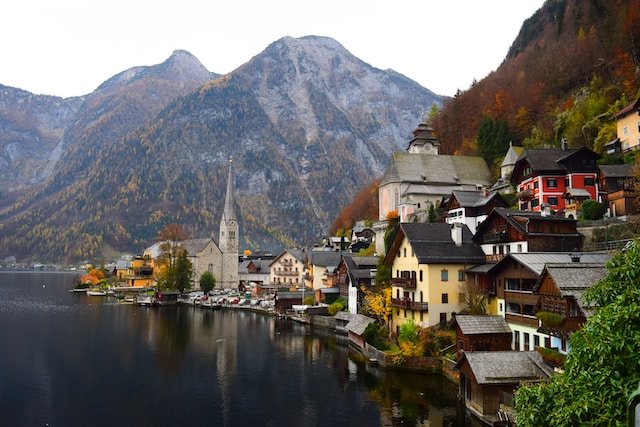Are you ready to embark on a journey to one of the most diverse and fascinating continents on Earth? Europe may seem like a vast mystery waiting to be explored, with its picturesque landscapes, ancient ruins, and bustling cities. But before you pack your imaginary bags and set off on this adventure, let’s discover some of the most exciting and kid-friendly facts about Europe! From the snowy peaks of the Alps to the sunny shores of the Mediterranean, Europe is a treasure trove of countries, cultures, and historical stories. This article will be your guide through the wonders of Europe so that you can impress your teachers and classmates with your knowledge before even stepping into school!

Geography of Europe
Europe is like a giant puzzle of countries snugly fit together, forming the second smallest continent in the world. Located entirely in the Northern Hemisphere and mostly in the Eastern Hemisphere, the Arctic Ocean surrounds it to the north, the Atlantic Ocean to the west, and the Mediterranean Sea to the south. But don’t let its size fool you; Europe is packed with diverse landscapes, from the rugged coastlines of Norway to the rolling vineyards of Italy. In the European Union, a unique political and economic partnership, countries work together to create a more unified Europe. The climate here can be as varied as the languages spoken, with the icy chill of the north giving way to the warm, balmy breezes of the southern coastlines. Europe is also home to some of the world’s most famous rivers, like the Danube and the Rhine, which have been vital for trade and culture throughout history.
Countries and Capitals
Did you know that there are about 44 countries tucked into Europe’s borders? Each one is unique, with its own capital bustling with life and history. For example, France’s capital, Paris, is known as the “City of Light,” while the ancient city of Athens in Greece holds the tales of gods and heroes. And if you’re wondering who can write papers for me about the fascinating capitals of Europe, just wait until you dive into the stories of cities like London, Madrid, and Rome. You’ll have plenty to write about! While Russia is the largest country partly in Europe, the smallest is Vatican City, which is so tiny it fits inside the city of Rome! Imagine a whole country where everyone could know your name!
History and Culture
Europe’s history is as old as time itself. Ancient Greece is often called the birthplace of Western civilization, and the Roman Empire once spread its influence far across the continent. Fast forward to the Middle Ages, and you’ll hear tales of knights, castles, and quests for honor. But Europe isn’t just about the past; it’s a living, breathing melting pot of cultures. You can find art by Picasso in Spain, read fairy tales written by Hans Christian Andersen in Denmark, and listen to the timeless music of Mozart from Austria. Every year, Europeans celebrate their rich heritage with festivals like the Running of the Bulls in Spain or the magical Christmas markets in Germany.
Government and Economy
Europe is interesting not just in its culture but also in how its countries are run. You’ll find monarchies with kings and queens, as well as republics led by presidents and prime ministers. The economy in Europe is one of the strongest in the world, with the Euro being the common currency in many of its countries, which makes trading easier. Many European countries are also part of the European Union, which allows goods and people to move freely across borders in much of the continent. This makes places like France known for their wine, Germany for their cars, and Belgium for delicious chocolate, able to share their specialties with neighbors easily.
Education and Languages
European kids have the opportunity to learn in some of the best education systems in the world, with a strong emphasis on learning multiple languages. It’s not unusual for children to speak their native language, plus English and perhaps one or two more languages! This is because Europe is home to an incredible tapestry of languages, including English, French, German, Spanish, and Italian, to name just a few. Europe is also where some of the world’s most famous universities are located, like the University of Oxford in England and the Sorbonne in France. Moreover, programs like Erasmus allow students to study in different European countries, which can be an exciting adventure and a great way to learn new languages and cultures.
Takeaway
After journeying through Europe’s landscapes, tasting its foods, celebrating its festivals, and cheering on its sports teams, it’s clear that this continent is a place where history and modernity blend beautifully. Europe’s stories are vital threads in the tapestry of our world’s history, filled with lessons of unity, diversity, and progress. For curious minds wanting to delve deeper into European studies, don’t hesitate to seek out the best thesis writing services to help guide you through the continent’s rich academic heritage. Whether you dream of visiting the Eiffel Tower, sailing the Mediterranean, or exploring the ancient ruins of Rome, Europe awaits with open arms and endless adventures for kids to learn and grow. So, keep exploring, asking questions, and discovering all the wonders that Europe has to offer!
